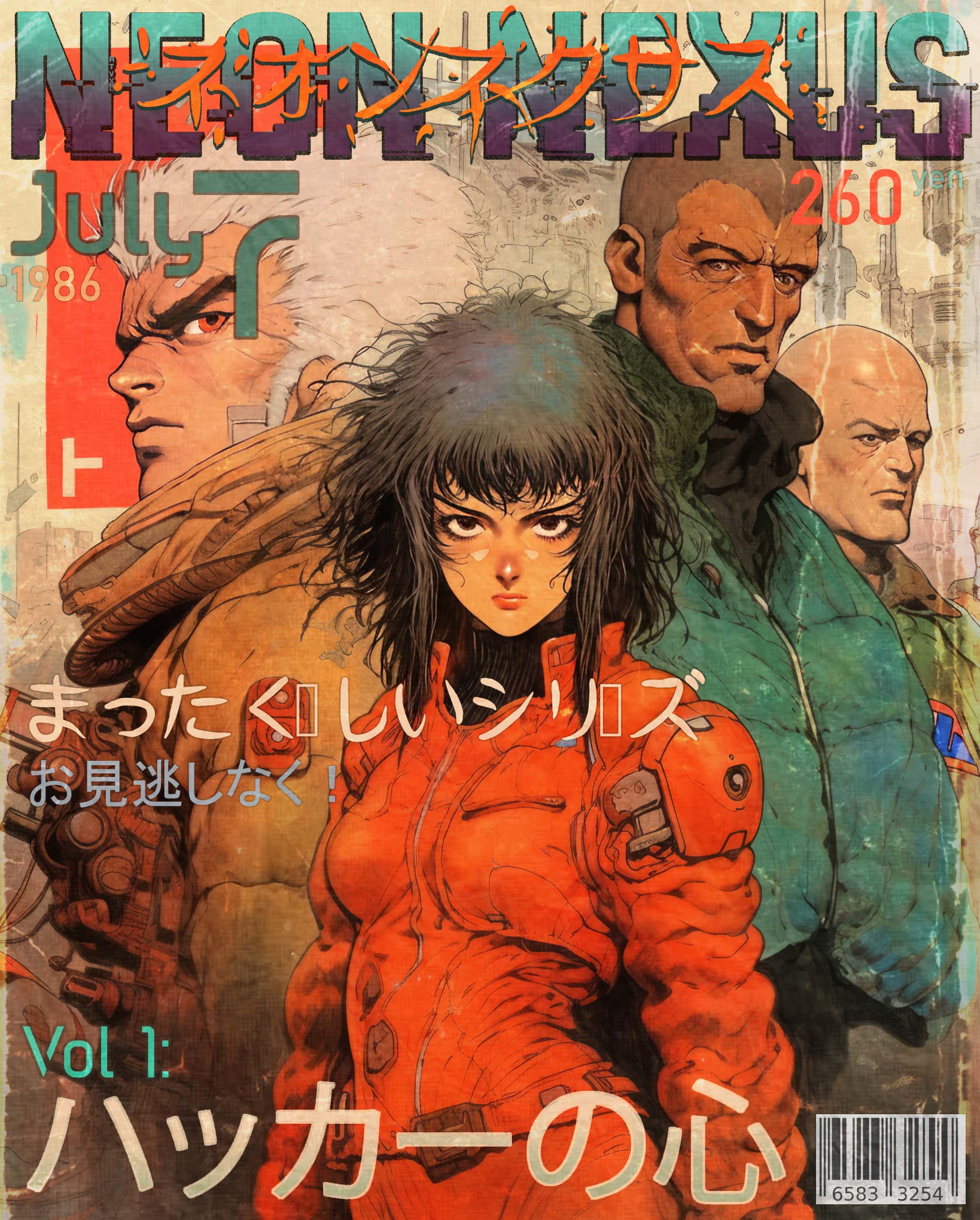
Neon Nexus
Setting: The towering megalopolis of Neo-Kyoto, a sprawling retro-futuristic city pulsating with neon lights, colossal holograms, and a web of aerial highways. The city is divided into three sectors, each distinguished by its height: the Undercity (slums and forgotten sectors), the MidCity (commercial and residential zones), and the HighSky (elite skyscrapers and penthouses).
Plot Summary: In Neo-Kyoto, human augmentation and cyber-enhancements are as common as smartphones. With these advancements, a new form of crime, “Neural Hacking,” emerges, allowing hackers to infiltrate and control the augmented parts of a person or manipulate memories.
Main Characters:
- Mai Kuroshima: A fiery 21-year-old detective with a mysterious past. She possesses an ancient, non-augmented bracelet inherited from her grandmother, which becomes a significant plot device. Mai refuses any form of augmentation, making her immune to neural hacks but also an outlier in society.
- Kai Sato: An infamous neural hacker with a sense of justice. He prefers using his skills to expose the dark truths of the powerful elite in the HighSky. Over time, he forms an uneasy alliance with Mai.
- Dr. Lena Ozawa: The genius behind the newest cyber-enhancements. She’s caught between the advancements she’s created and the ethical concerns they bring. She aids Mai and Kai, often providing valuable technical insights.
The Origins of Neon Nexus
From the moment my young fingers flipped through UK publications like “Manga Mania” and “Super Play,” or when my eager eyes feasted on those scarce anime VHS tapes, I was smitten. With “Neon Nexus,” I’ve married my two true loves: the gritty allure of cyberpunk and the timeless essence of manga and anime. As someone who’s always oscillated between the cinematic frames of comics and the vast realms of graphic novels, this gallery serves as a pulsating neon tribute to those unforgettable inspirations.
Inspiration Wrapped in Neon
Looming over this digital canvas is the towering megalopolis of Neo-Kyoto, illustrating my deep-seated admiration for the classic manga and retro anime styles. Its sprawling landscapes, dotted with neon lights and colossal holograms, are reminiscent of scenes straight out of a graphic novel. But of course, in true Alex Tooth fashion, there’s a twist! By leveraging the potent combo of AI prompting and the versatile power of Photoshop, the Neo-Kyoto here feels as fresh as the cyber-enhanced denizens that call it home.
Layers of Neo-Kyoto
The city’s tri-layered structure – the Undercity, MidCity, and HighSky – draws viewers into a stratified world. This isn’t just an art project; it’s a narrative waiting for you to unravel. As your eyes wander from one piece to another, you’ll encounter the stories of individuals and the sectors they hail from. From the murky Undercity to the pristine HighSky, every pixel is drenched in story.

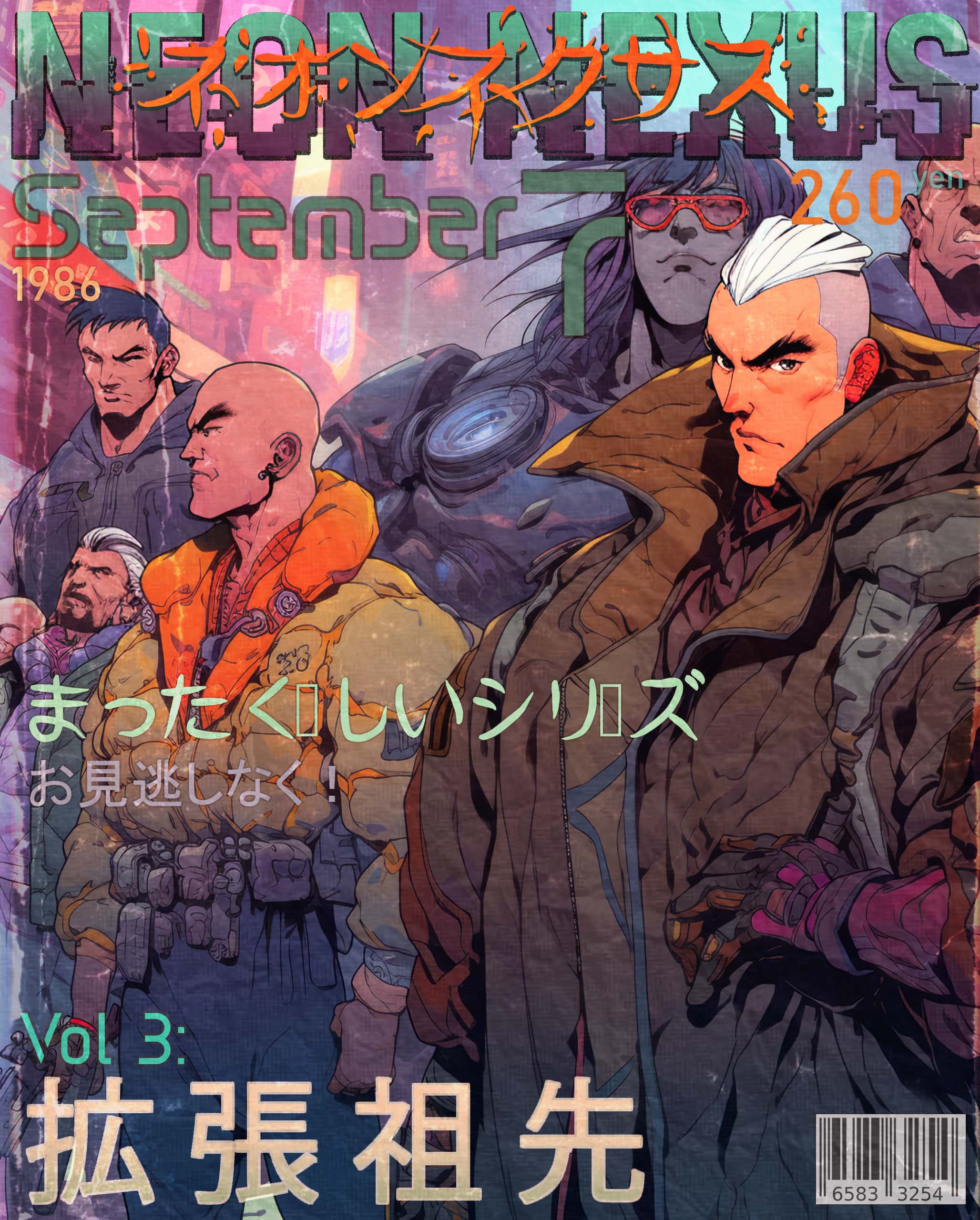
Characters with Depth and Pixels
Meet Mai Kuroshima, our non-augmented heroine who’s as fierce as she’s intriguing. Then there’s the morally complex Kai Sato, the neural hacker with a penchant for exposing dark secrets. And not to forget, the brilliant Dr. Lena Ozawa, the mastermind behind the cyber-enhancements that define Neo-Kyoto. Each character, carefully crafted in the vibrant palettes of manga, anime, and comic art, oozes individuality and narrative depth.
Behind the Scenes with Alex Tooth
Crafting this gallery was no mere task. With each character and backdrop, I’ve tried to infuse the essence of the comics, manga, and anime that colored my childhood. The seamless blend of AI prompting with Photoshop brought forth a visual style that feels both nostalgic and forward-looking – a delightful concoction of cyberpunk, anime, manga, and comic vibes.
In Conclusion
“Neon Nexus” is more than an art gallery. It’s an ode to the genres and styles that shaped my artistic journey. It’s where the futuristic stylishness of cyberpunk manga and anime finds its voice amidst the echoes of the classics. So, immerse yourself, lose track of time, and let’s wander the neon-lit streets of Neo-Kyoto together! And hey, if you see any neural hackers, remember – it’s all part of the experience. 😉
“Neon Nexus: Echoes of Neo-Kyoto” (1987 Live Action Film)
Overview
“Neon Nexus: Echoes of Neo-Kyoto” hit the silver screen in 1987, adapting the beloved manga series into a visually arresting live-action spectacle. Directed by the visionary Kenjiro Takahashi, often dubbed as the Japanese Ridley Scott, the film boasts a cyberpunk aesthetic reminiscent of “Blade Runner”, infusing the neon-lit streets of Neo-Kyoto with a mood of anticipation and intrigue.
Star-Studded Cast
In a casting coup, the film featured the illustrious 80s Japanese actress, Mika Yoshida, in the iconic role of Mai Kuroshima. Her fierce portrayal, blended with a touch of vulnerability, resonated deeply with both new viewers and seasoned “Neon Nexus” fans.
Plot Deep Dive
The Enigma of Psychic Children
Beneath the aerial highways and colossal holograms of Neo-Kyoto, a shadowy government facility harbors a secret – psychic children with unparalleled telekinetic abilities. Bound to sterile labs, these children, often referred to as “The Kinetics”, possess the power to move objects, disrupt electronic circuits, and even influence human emotions. But why are they here? And who controls their tremendous power?
Mai’s Mission Unfolds
Mai Kuroshima, a detective with a vendetta, finds herself entangled in this web of conspiracy. Haunted by a past where she lost a younger sibling to unknown kidnappers, she suspects a link between her personal loss and The Kinetics. As she dives deeper, she realizes that her very own government might be behind the sinister experiments.

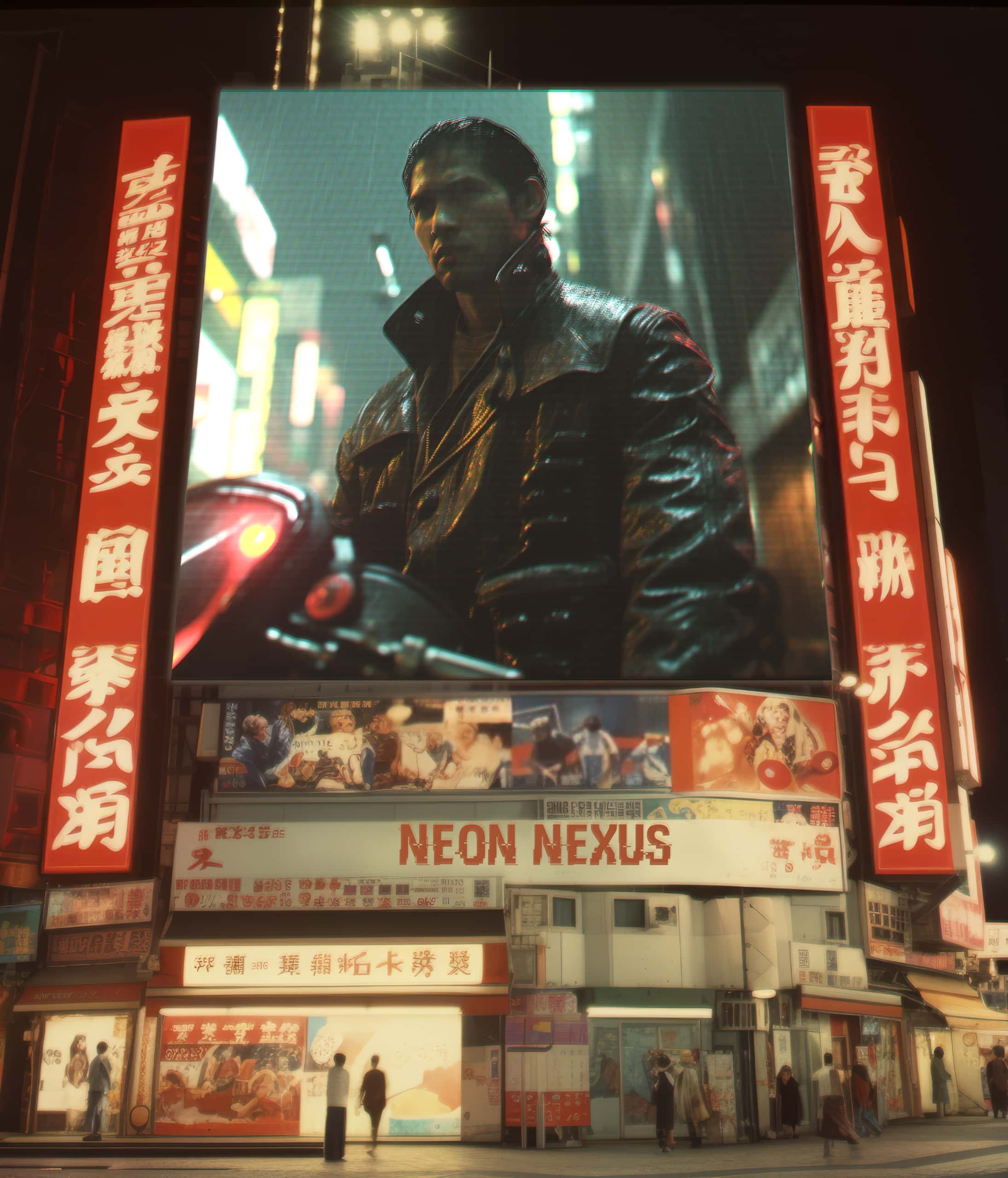
Enter Kai Sato
Kai Sato, the infamous neural hacker, initially appears to be an antagonist. However, a twist of fate and shared enemies force him to join hands with Mai. Together, they’re the perfect team: she with her raw intuition and combat skills, he with his unparalleled hacking abilities. Their dynamic is charged, filled with both tension and mutual respect.
Army Antagonism & Bike Gang Alliances
As Mai and Kai inch closer to the truth, they’re met with formidable opposition from Neo-Kyoto’s armed forces, led by the ruthless General Hayashi. With the might of the military against them, Mai finds unlikely allies in the local bike gangs of Neo-Kyoto, especially the rebellious leader, Taro Nakamura. After a chance encounter and a thrilling bike chase, Taro, intrigued by Mai’s audacity, offers his gang’s assistance.
Dr. Lena Ozawa’s Dilemma
Dr. Lena Ozawa, a character of multiple shades, finds herself in a moral quandary. The very psychic enhancements she innovated are now being used on The Kinetics. Her battle is internal, torn between the allure of scientific breakthroughs and the ethical horror of exploiting children.
The Showdown
In a climactic battle, the neon streets of Neo-Kyoto become a warzone. Psychic powers, neural hacks, roaring bikes, and military might clash in a spectacle of chaos and emotion. Relationships are tested, secrets unveiled, and sacrifices made.
Legacy & Reception
Upon release, “Neon Nexus: Echoes of Neo-Kyoto” met with mixed reviews. Critics were polarized by its heavy reliance on mood and atmosphere, sometimes at the expense of a linear narrative. However, its rich world-building, intricate character dynamics, and visual grandeur earned it a devoted fanbase. Over the years, this cult classic has seen a resurgence in popularity, with international audiences celebrating its ahead-of-its-time essence.
With “Neon Nexus: Echoes of Neo-Kyoto”, the cyberpunk genre was gifted a jewel that continues to shine, brighter with each passing year.
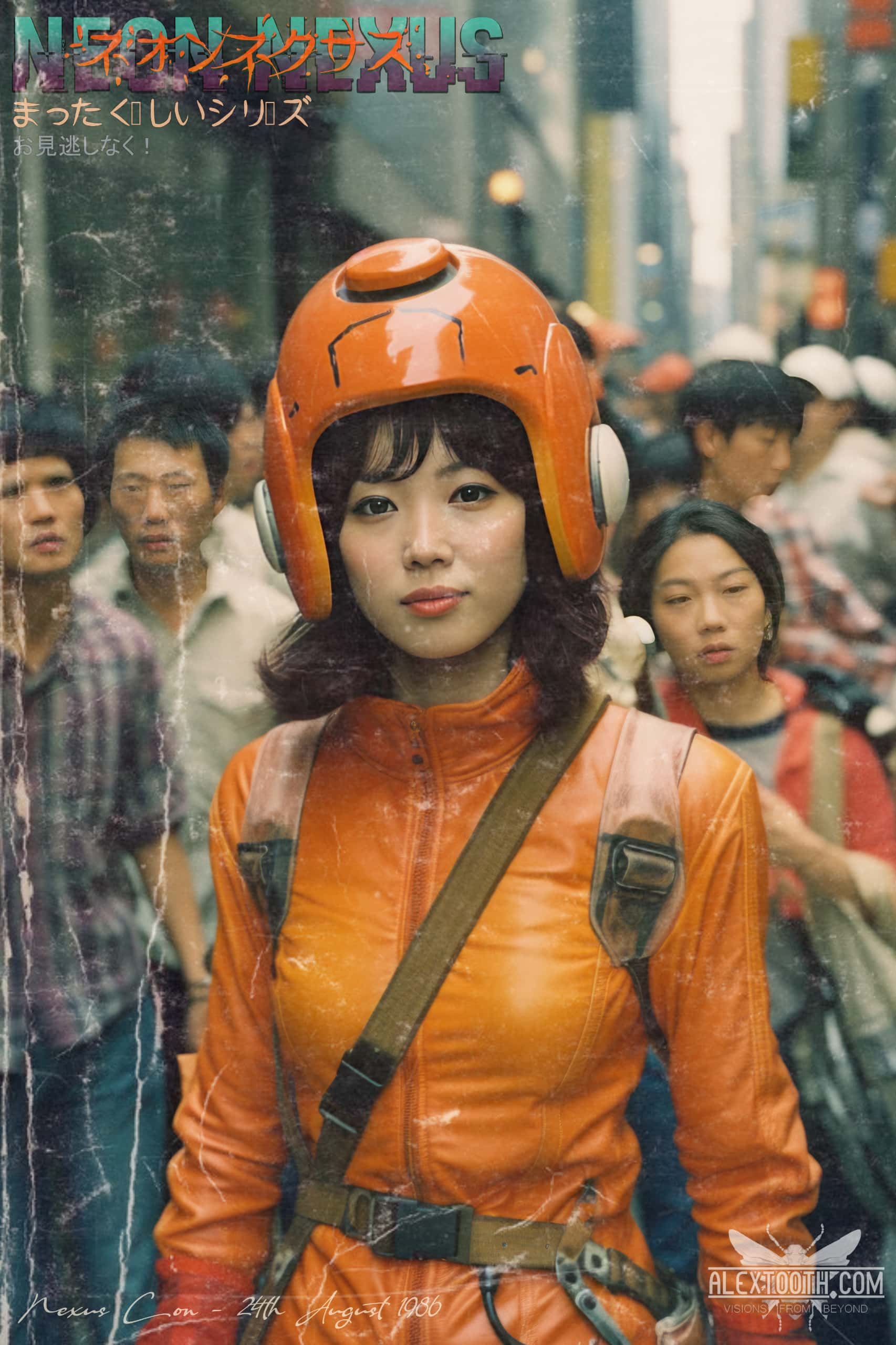
Tokyo Neon Con 1986: When Manga Fans Paved the Way for Cosplay
The Birth of a Phenomenon
August 1986, in the bustling heart of Tokyo, a unique convention took the city by storm. Named “Tokyo Neon Con”, this was not just another gathering for manga enthusiasts. Here, zealous fans of the rapidly rising “Neon Nexus” manga series gathered, donned in elaborate attire, mimicking their favorite characters from the beloved series.
Before ‘Cosplay’ There Was…
Long before the world was introduced to the term ‘cosplay’, Japan was already nurturing its roots. These passionate fans, eager to express their adoration for the manga series, started dressing up, taking the streets of Tokyo as though they were in the neon-lit alleys of Neo-Kyoto. They didn’t have a name for what they were doing yet, but soon, they coined themselves the “Manga Mimics”.
A Trend Ahead of Its Time
The “Manga Mimics” trend didn’t stop at conventions. Young adults and teenagers began exploring urban Japan, draped in flamboyant outfits inspired by the likes of Mai Kuroshima, Kai Sato, and even the psychic Kinetics. They’d cluster in small groups, acting out elaborate mysteries inspired by the series, pretending—and sometimes believing—they were unraveling conspiracies, hacking networks, or taking on the might of the futuristic army.
Japan, already at the forefront of technology and trends in 1986, saw this as yet another feather in its cap. The “Manga Mimics” movement was emblematic of a country that was increasingly setting global trends, not just in tech, but in popular culture too.
From Streets to Screens
It wasn’t long before these street theatrics caught the eyes of entertainment producers. Impressed by the intricate, sometimes even futuristic designs of the costumes, and the fervor with which fans recreated “Neon Nexus” scenarios, discussions began to adapt the series to a larger screen. This fan-driven phenomenon was undoubtedly a significant catalyst in green-lighting the now-legendary “Neon Nexus: Echoes of Neo-Kyoto” live-action film. The fervor, passion, and detail of the “Manga Mimics” were an advertiser’s dream. If a manga series could inspire such loyalty and creativity, surely a film adaptation would be a hit!
Neon Nexus on Prime Time TV
As the popularity of the manga series continued to skyrocket, it was only natural for it to be adapted into an anime series. With a prime-time slot on national television, “Neon Nexus” was no longer just a series for enthusiasts; it was becoming a household name. Scenes from the anime series echoed in the living rooms across Japan, as children took up brooms as props, envisioning them as high-tech gadgets, acting out their favorite scenes, much to the amusement (and sometimes bemusement) of their parents.
Postcards from the Past
To commemorate the unprecedented success of Tokyo Neon Con ’86, collectible postcards were released featuring the most iconic “Manga Mimics” of the convention. These postcards became instant hits, getting tacked on walls and traded among fans. Some even came with later issues of the “Neon Nexus” manga magazine, turning them into treasured collectibles. Today, these postcards are not just mere pieces of paper, but a vibrant testament to the early days of a cultural phenomenon we now know as cosplay.
Conclusion
The “Manga Mimics” of 1986 were trailblazers, setting the stage for what would become a global trend. These fans, with their unwavering passion and creativity, not only made “Neon Nexus” a household name but also paved the way for countless fans across the world to express their love for their favorite characters through cosplay. As the world continues to embrace and celebrate this form of expression, it’s essential to remember and pay homage to its humble beginnings on the neon-tinted streets of 1980s Tokyo.
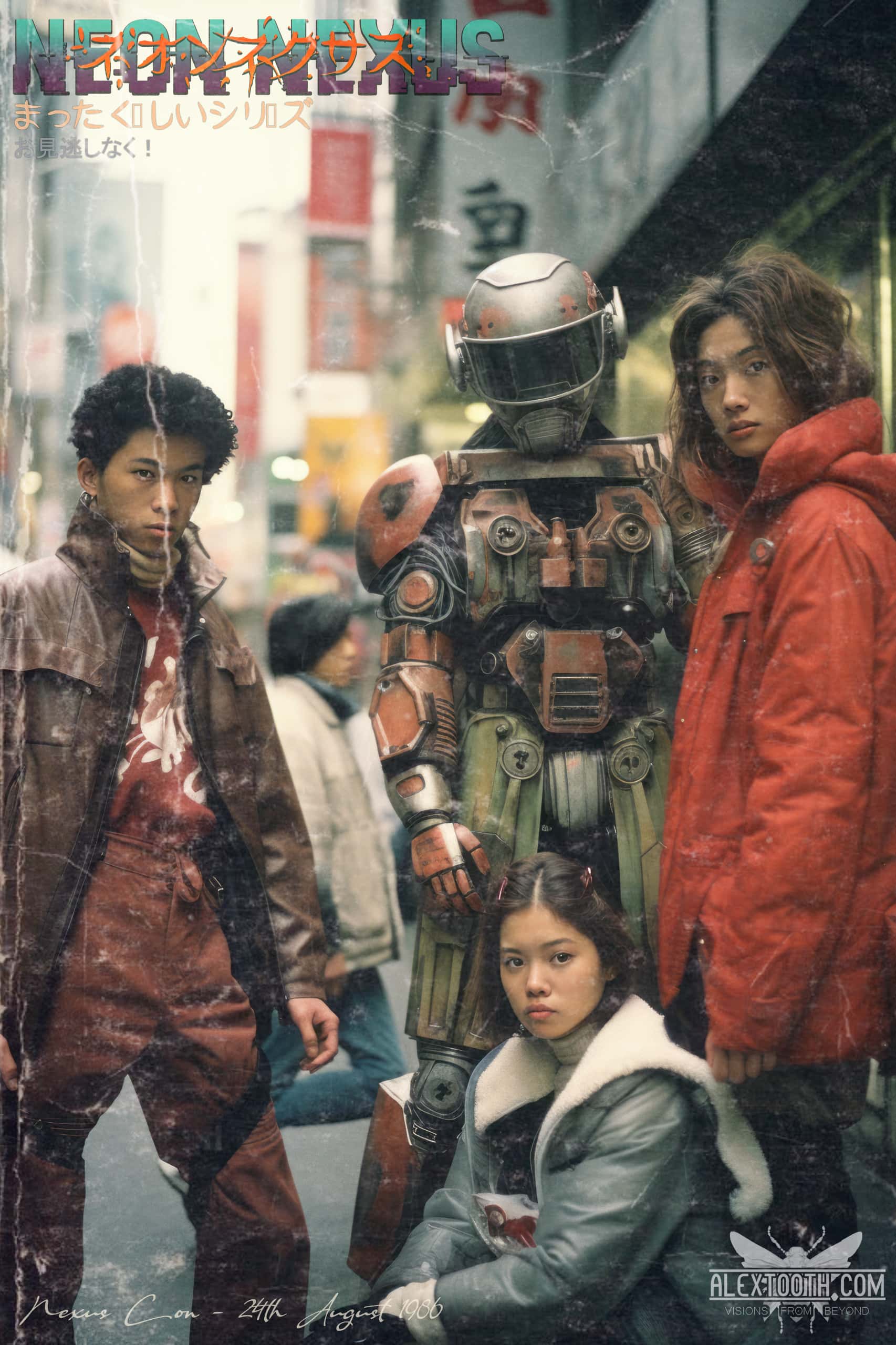
Neon Nexus: The Cultural Revolution of an Imagined Era
Echoes of a Phenomenon
Neon Nexus wasn’t just another manga or anime series; it was a cultural earthquake that changed the pop-culture landscape. With its stunning visuals and intricate plots, it was no wonder that its tremors were felt in every corner of society.
Action Figures: More than Child’s Play
It started innocuously enough. The shelves of toy stores across Japan were adorned with the recognizable figures of Mai Kuroshima, Kai Sato, and even the psychic kids. These weren’t just any action figures; they became symbols of youth and aspiration. Now, they’re more than just symbols. They’re invaluable collectibles, a nostalgic tribute to an era gone by.
From Manga Pages to Billboards
Stepping out in the city, it was hard to miss the gigantic billboards showcasing the latest adventures of Neon Nexus’s protagonists. Its presence wasn’t just limited to the towering billboards; the manga comic was a staple in every teenager’s bedroom. Pages filled with cyberpunk fantasies became nightly reading material, with posters adorning walls, becoming a rite of passage for many.
Prime Time Dominance
Then came the anime series. Landing a prime-time slot on national television, Neon Nexus turned from a teenage fad to a national obsession. Families would gather around their TV sets, waiting eagerly for the next episode. The storylines, the characters, and the unique blend of technology and mysticism made it an irresistible watch.


Pixelated Adventures: Neon Nexus in Gaming
As if the manga and anime weren’t enough, Neon Nexus expanded its dominion into the world of video games. Whether you owned an 8-bit or 16-bit console, there was a version of Neon Nexus for you. From thrilling platform shooters where characters navigated the neon-lit streets of Neo-Kyoto to adventurous games, exploring intricate conspiracies, millions of copies were sold, making it a sought-after game title.
Children of the Nexus Revolution
On playgrounds, kids wouldn’t just play tag or hide and seek. They would mimic their favorite characters, pretending to harness kinetic powers and “hack” into playground equipment. Little did they know, these innocent role-plays would one day be considered the earliest cosplaying attempts.
The Tidal Wave of Popularity
The rise of Neon Nexus wasn’t just about its characters or storylines; it epitomized how something could capture the collective imagination of an entire generation. People were taken away with its popularity, leading to spin-offs, merchandise, and even fashion trends inspired by the series.
A Grainy Window to the Past
Unfortunately, with the passage of time, many memories have faded, and all that remains are grainy photographs. These images, although lacking in clarity, encapsulate the fervor and passion of an era, serving as a bridge between the past’s imagined realities and the present.
A Masterful Mock Creation
And yet, as we immerse ourselves in this rich history, we must step back and marvel at the power of technology. This entire world, this intricate tapestry of culture and phenomena, was nothing but a masterful mock creation, a blend of Photoshop prowess and cutting-edge AI technology. It’s a testament to what can be achieved when creativity meets technology, reminding us of the untapped potential of AI, even at its beginning stages.
Conclusion
The Neon Nexus “era,” though a fabricated realm, showcases the dynamic dance between imagination and technological possibility. It invites us to not just consume media but to question, reimagine, and, most importantly, to create.
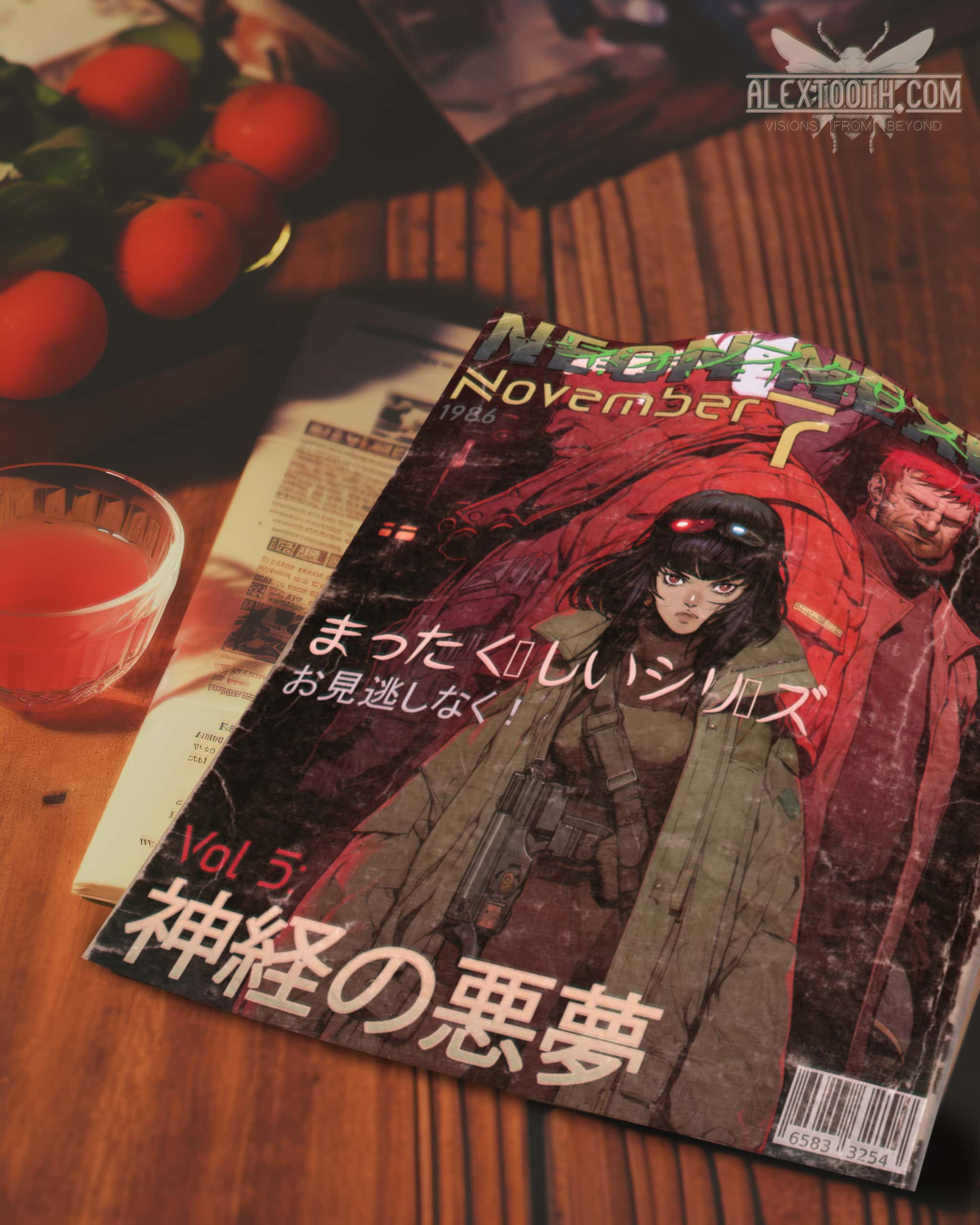


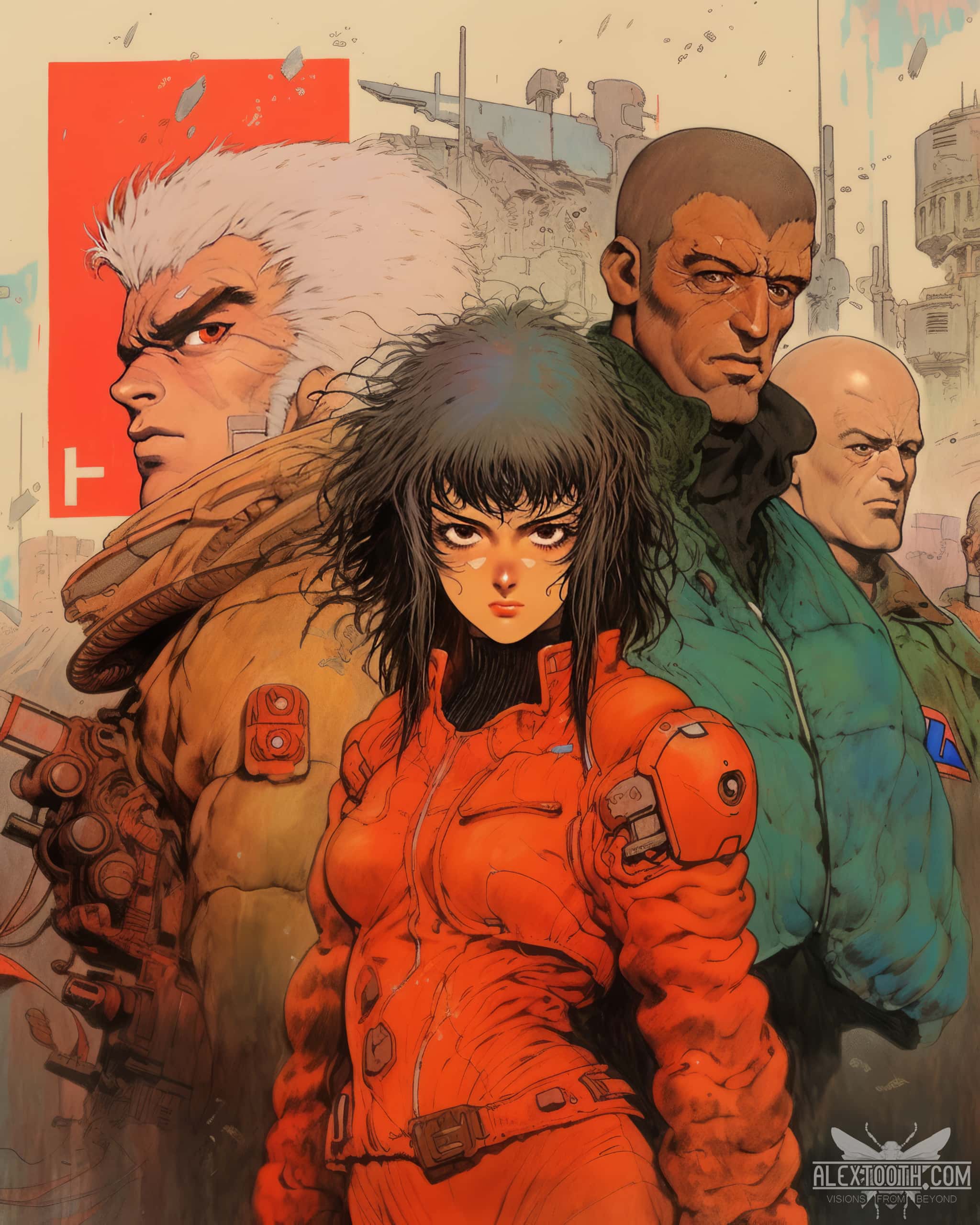


Leave a Reply